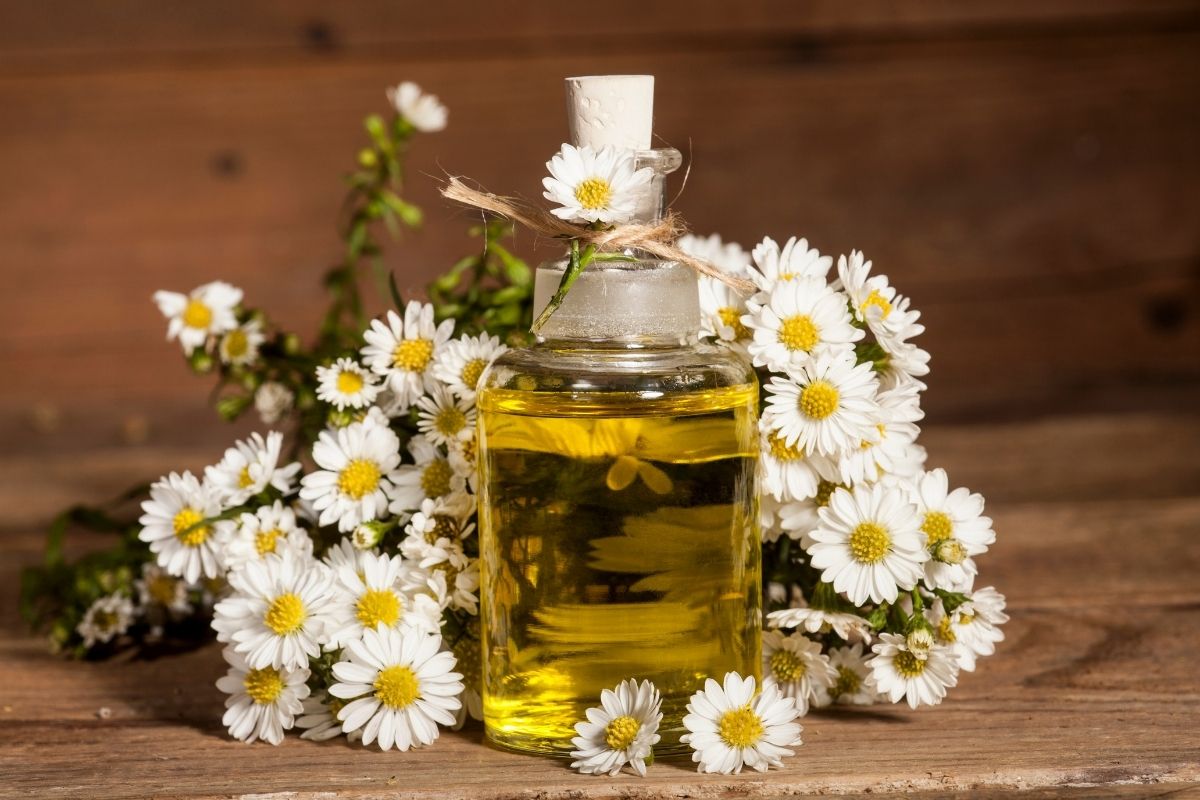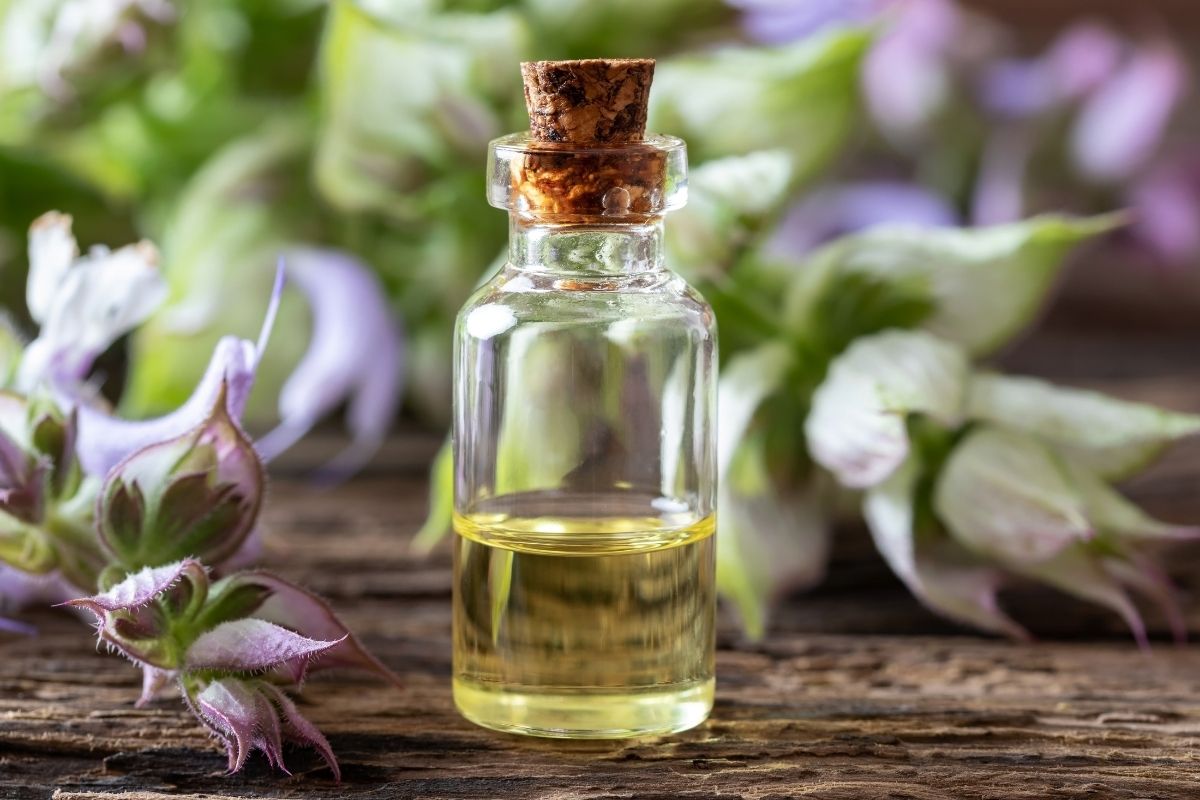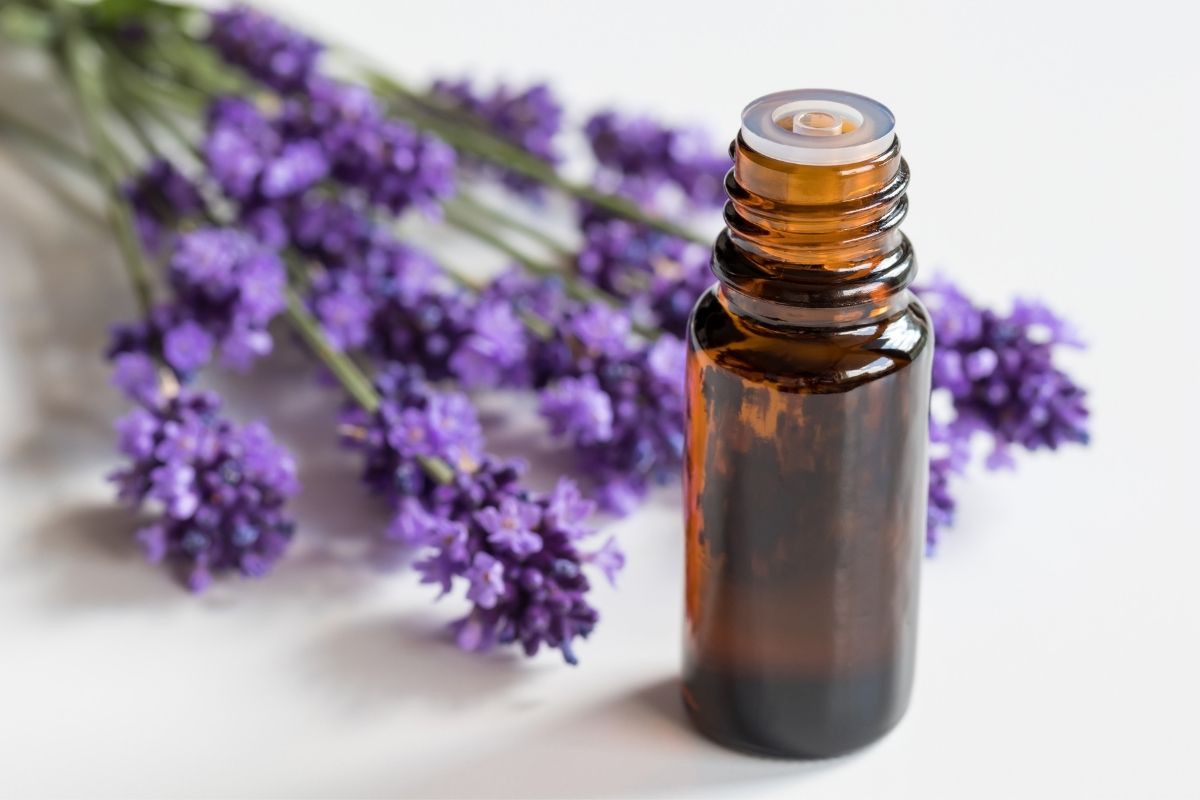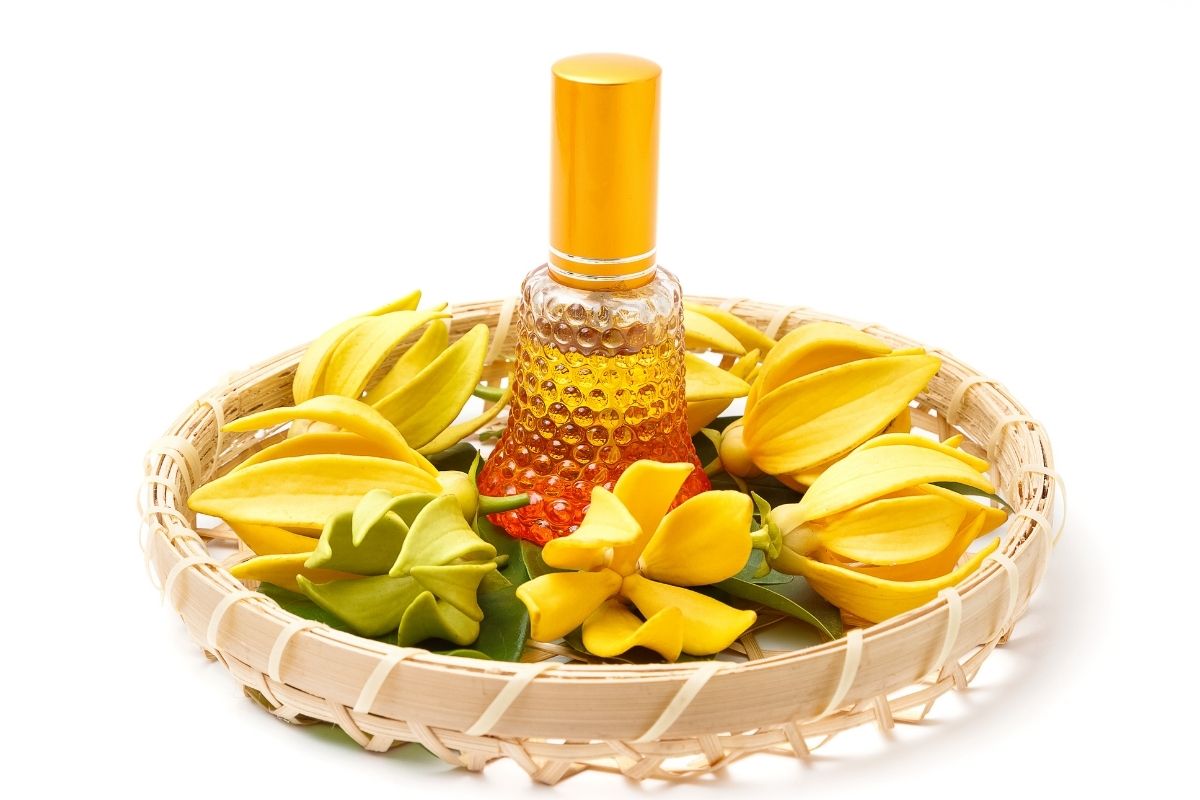
We live in a world of constant change, and finding a sliver of time to call your own is extraordinary. Taking a few long moments of the day to meditate can help center you and improve your well-being. Using essential oils while meditating can help ground you, reduce negative energy, and lift your spirits.
There are many essential oils, and they all have a purpose and use. Some have qualities that soothe and others qualities that will energize you. Knowing when to use them and which ones work best for you takes a little experimentation.
I find lavender very relaxing; however, you may not and may prefer something earthier like sage or sandalwood. You may already know the scents that bring you calm. However, you can mix the aromas of essential oils to make your quiet place even more peaceful.
One of the essential oils listed here will help you transcend the bonds of today’s worries as you meditate in your quiet space.
1. Chamomile essential oil

Chamomile tea is a calmative, and essential oil made from this plant has the same effect. It is best used in the evening as you are settling down, as it makes some people so relaxed that sleep comes soon after exposure to this essential oil. Chamomile is a very mild herb that you can grow yourself.
Of course, making essential oil from plants requires more than a home kitchen. However, you can grow the plant and add it to your tea. Chamomile essential oil may help the body relax while leaving your mind lightly aware.
Chamomile is said to bring inner awareness and calm.
2. Cedarwood essential oil

Oil from cedar wood provides an aromatic experience that may help you realign your thoughts and find your spiritual path when roadblocks occur. The aroma of cedarwood has a grounding and calming effect on your mind, body, and spirit. When used along with your meditation session, you will find that your mind is more open and your body relaxed.
Cedar essential oil is distilled from the wood chips of the cedar tree. Each type of cedar tree produces essential oils with slightly different qualities. For example, essential oil from cedar may come from Atlas cedar, Chinese cedar, Texas cedar, Virginian cedar, and Port Oxford cedar.
Virginian cedar is the most common variety of wood used to make essential oil in the United States. Atlas and Atlantic cedar are also prevalent essential oils. However, the trees from which this oil is made are on the endangered species list, making this oil harder to find.
Each of these trees grows in different locations and has additional attributes. As with all of the essential oils here, test a little before getting carried away with oil because it smells lovely.
3. Clary sage essential oil

Sage has more to offer than seasoning your meals. Essential oil made from sage can replenish your energy and help you find emotional balance. It can also help ease negative moods by strengthening your senses during your meditation.
One of several varieties of sage, Clary sage has a sweet, soft floral scent that is nutty and earthy in smell. Although from the same family, Clary sage essential oil is slightly different from common sage. Sage essential oil can help clarify the mind when used during meditation.
The Lakota Indians called it the ‘master herb’ because of its nerve tonic and cleansing properties. Using sage topically can eliminate toxins and is used in meditation. Sage soothes, balances, and strengthens your senses.
4. Eucalyptus essential oil

Eucalyptus oil can help you breathe better. When you use it during a mediation session, the aroma of the oil will help open your respiratory functions, which will help you cleanse your body of stress. Breathing is an essential part of meditating.
Eucalyptus oil aids breathing and is one of the first things one learns for meditation and yoga. Breathing deeply and exhaling your lungs fully rids the body of excess carbon dioxide and toxins. With essential oils such as eucalyptus, you can learn to appreciate the healing qualities of meditation fully.
In addition, adding aromatherapy to your session enhances your overall well-being.
5. Frankincense essential oil

Frankincense essential oil can promote a sense of enlightenment and a balanced mental state. In addition, it has been shown to reduce nasal congestion, stress, and inflammation. Frankincense may be one of the best-known essential oils.
It comes from the oil of the Boswellia trees, which are native to Yemen, Oman, and Somalia. The oil is extracted from the tree using steam distillation which releases the resin from the tree. The benefits of this essential oil and the benefits of the whole plant are still being conducted.
For example, the Chinese have learned that Frankincense combined with Myrrh may prevent the spread of cancer cells. That is not saying that Frankincense can heal your every ailment. However, it is beneficial to use it during your meditation sessions to clear your mind and allow you to find your center.
6. Lavender essential oil

Essential lavender oil has been used as a calmative for generations. The sweet fragrance has a soothing effect. During meditation, using essential lavender oil will help you relax, release your anxiety, and promote emotional balance.
The mere aroma of lavender can calm your anxiety and relieve your stress. When used with meditation, the essential oil will bring you a calm that will allow you to center yourself and unwind. Lavender can be used for more than your meditative moments.
It is antifungal, anti-inflammatory, and has antimicrobial properties. It is used in soap, perfume, and essential oil that you can use for multiple purposes.
7. Palo Santo essential oil

Palo Santo essential oil gets rid of negative energy in place of meditation and negativity in your thoughts and sentiments. For some people, it promotes calmness, a feeling of being grounded. Palo Santo is wood harvested from some Central and South American regions, where it is referred to as ‘holy wood’ in Spanish.
These trees are woody and related to citrus trees, and their aroma is of mint, lemon, and pine. Therefore, it is beneficial to your meditation. It also smells good. Another benefit of essential oils is their delightful aroma.
8. Patchouli essential oil
Used in perfumes and cosmetics, the fragrance depends heavily on patchouli as a scent for their products. It comes from the Pogostemo cablin plant, steam distilled to provide pure patchouli oil. Although patchouli has many medicinal qualities, patchouli essential oil can bring clarity during your meditation session.
By putting a little on your wrist or neck or diffusing the oil, you can surround yourself with its scent. Mixing patchouli essential oil with sandalwood, jasmine, or ylang-ylang will enable you to focus and acquire mental clarity. It has also been shown to boost the mood of those who use it, especially when it is blended with other oils.
9. Peppermint essential oil

Mint has many uses, and it will show up in food, fragrances, and essential oils, for use during meditation. It is used as a fragrance and cosmetics, like patchouli and other plants. Peppermint, a cross between water mint and spearmint, has been used medicinally for centuries.
The oil is taken from the flowers, as well as the leaves. The menthol quality of peppermint helps muscles relax. This leads to stress relief and the ability to rest, which is the goal of meditation, rest, and freeing one’s mind from every negatively stressful thought.
10. Sandalwood essential oil

Sandalwood is used during yoga and meditative sessions because of its grounding effect. In addition, the sweet, woodsy aroma will help you bring more clarity to your meditation. Sandalwood has the added benefit of lowering your blood pressure, focusing, relaxing, and clearing the noises in your head.
Sandalwood is dry wood from deciduous forests and is in Asia. The sandalwood tree grows to about sixty feet in height and has red-colored wood and bark that may be red, grey, or brown. Every part of the sandalwood tree is used to make essential oil through various processes.
11. Vetiver essential oil

Like sandalwood, the essential oil will provide grounding. Its earthy aroma can be mixed with citrus essential, ylang-ylang, and cedar essential oil. Vetiver essential oil comes from a perennial grass that is native to India.
This oil provides a calming effect that will ground you and enable you to find a moment’s peace. Any essential oil that soothes and calms you is suitable for use during meditation. However, just as each oil is different, so are we.
So, it may take you a while to find the essential oil that works best for you and your situation.
12. Ylang ylang essential oil

Another essential oil that aids yoga and meditation is ylang-ylang, which helps filter out the bad energy and balance the good. It has a floral aroma, is very strong, and you should use it sparingly. Made from the Cananga tree’s star-shaped flower (Cananga odorata), it grows in southeastern Asia and Australia.
It has been found to lower blood pressure, decrease heart rate, reduce depression, and boost your mood. As one of many essential oils you can use to relax while meditating, ylang-ylang oil offers many of the attributes of the others. However, its mild floral scent makes it perfect for blending with other essential oils for a broader effect during meditation.
How to use essential oils during meditation?
Now you know what essential oils you should use when meditating. However, they can be used in several different ways. Although you can use essential oils topically, they work well with diffusers, electric diffusers, candle diffusers, steam diffusers, wearable, or room sprays.
With essential oils, you can add a single essential oil to a diffuser, or you can blend several for a more intense effect.
Too much of a good thing may be harmful.
Essential oils are blended for topical use only. They are not formulated to be ingested or added to food or drinks. Instead, the object of aromatherapy using essential oils is to fill your surroundings with the oil’s aroma (s).
Before going full speed ahead using new essential oils, dilute one drop of essential oil with four drops of coconut oil or another carrier oil. Then, apply a tiny bit of it to a non-sensitive area of your body to see if you react to it before using the oil. Oil need not be on your skin for you to have an allergic reaction to it.
However, merely breathing the oil-filled air is enough to set off a response if you are allergic to its odor. I am allergic to patchouli, even if you are wearing it and not me. So, the point is to be very careful when trying new products.
Reactions to essential oils may include hives, burning, redness, rash, low blood pressure, nausea, and headache. However, some people may have far worse reactions. So, before using a new essential oil for meditation, perform a skin test on yourself to ensure you will not have an adverse reaction.
You want an essential oil to lift you, not make you ill, and you may have to try several before finding one suitable for you.
Sources:
